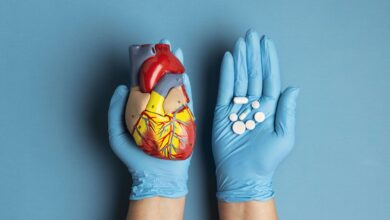Seven Types of Cardiovascular Disease: Symptoms and Effects on the Human Body

The cardiovascular system plays a crucial role in the human body. It comprises the heart and blood vessels that are responsible for pumping blood to all parts of the body. However, this system is also prone to various diseases, which can result in severe health complications. Cardiovascular diseases are a group of disorders that affect the heart and blood vessels, and they are responsible for a significant number of deaths worldwide. In this essay, we will discuss the seven types of cardiovascular disease and their effects on the human body.
Coronary Artery Disease
Coronary artery disease is the most common type of cardiovascular disease, and it occurs when the coronary arteries become narrowed or blocked. This condition can lead to a heart attack, angina, or heart failure. Coronary artery disease is often caused by a buildup of plaque inside the arteries, which restricts blood flow to the heart.
Heart Failure
Heart failure is a condition where the heart is unable to pump enough blood to meet the body’s needs. This can occur when the heart muscles become weakened or damaged, or when the heart chambers become stiff and unable to relax properly. Heart failure can cause shortness of breath, fatigue, and swelling in the legs and ankles.
Arrhythmia
Arrhythmia refers to an abnormal heart rhythm, which can cause the heart to beat too fast, too slow, or irregularly. This condition can occur due to various factors, including heart damage, electrolyte imbalances, or genetics. Arrhythmia can lead to a decreased blood flow to the body, causing symptoms such as dizziness, fainting, and shortness of breath.
Valvular Heart Disease
Valvular heart disease occurs when one or more of the heart valves become damaged or diseased. This condition can cause the valves to become stiff, leaky, or narrow, which can affect blood flow in the heart. Valvular heart disease can cause symptoms such as chest pain, fatigue, and shortness of breath.
Peripheral Artery Disease
Peripheral artery disease is a condition where the blood vessels outside of the heart and brain become narrowed or blocked. This condition is most common in the legs, and it can cause pain, numbness, and weakness. Peripheral artery disease can also increase the risk of heart attack or stroke.
Aortic Aneurysm
An aortic aneurysm is a bulge in the aorta, the largest blood vessel in the body. This condition can occur due to various factors, including high blood pressure, smoking, or genetics. Aortic aneurysms can cause chest or back pain, and if left untreated, they can rupture, leading to severe bleeding and potentially life-threatening complications.
Congenital Heart Disease
Congenital heart disease is a condition that is present at birth, and it occurs due to structural abnormalities in the heart. This condition can affect the heart’s chambers, valves, or blood vessels, leading to various complications. Congenital heart disease can cause symptoms such as cyanosis, shortness of breath, and fatigue.
Also, read about the 10 most common health conditions in the United States
Cardiovascular disease is a group of disorders that affect the heart and blood vessels. These diseases can cause severe health complications, and they are responsible for a significant number of deaths worldwide. Understanding the various types of cardiovascular disease and their effects on the human body is crucial for prevention, diagnosis, and treatment. By making lifestyle changes and seeking medical attention promptly, individuals can reduce their risk of developing these conditions and improve their overall health.




7 Comments